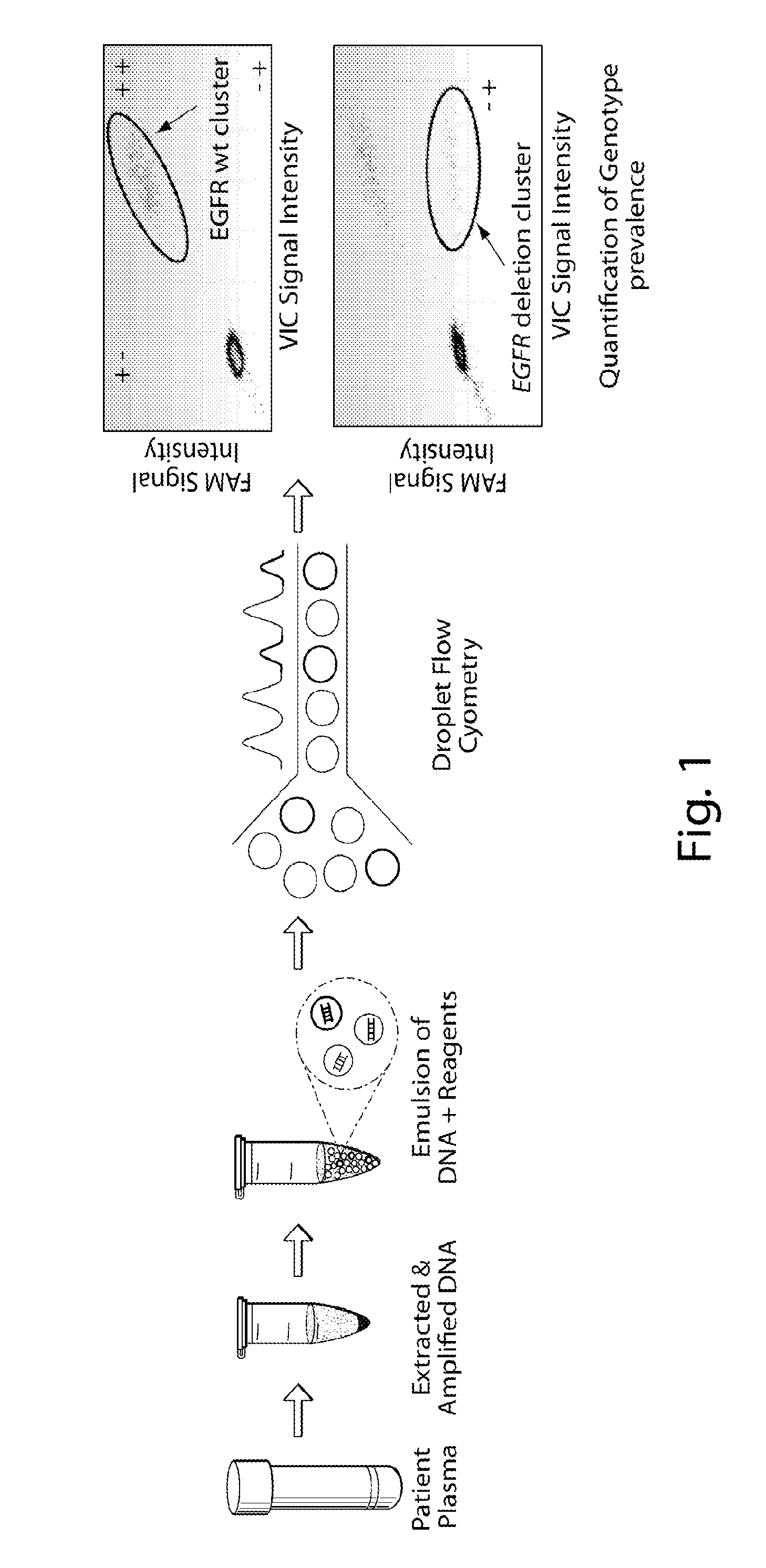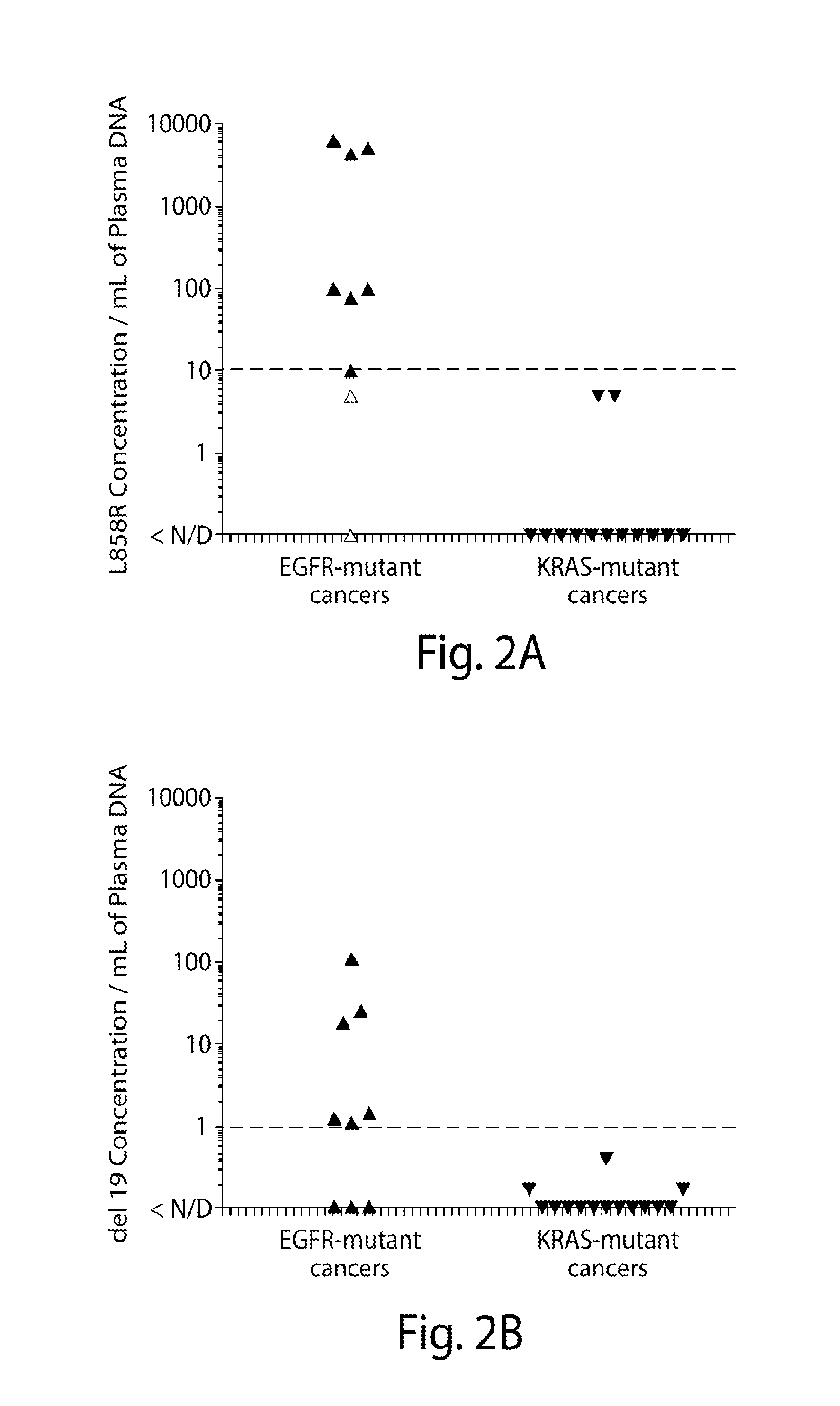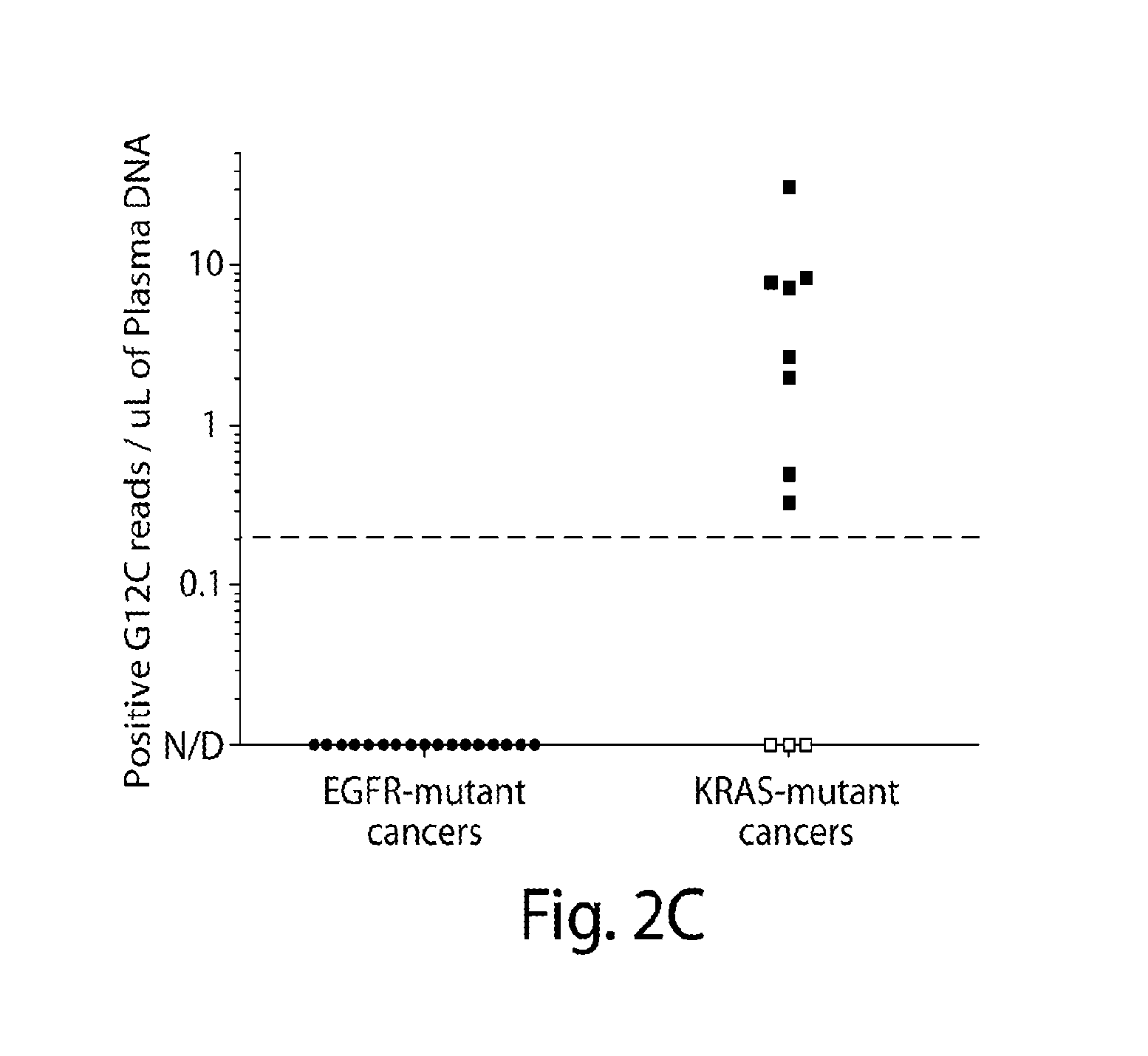Non-invasive blood based monitoring of genomic alterations in cancer
a cancer and genomic technology, applied in the field of cancer, can solve the problems of repeat biopsies, limited success of the available treatment methods, and lack of understanding of the molecular changes of cancers, and achieve the effect of diagnostic and prognostic utility
- Summary
- Abstract
- Description
- Claims
- Application Information
AI Technical Summary
Benefits of technology
Problems solved by technology
Method used
Image
Examples
example 1
Protocols for Sample Preparation and Droplet Digital PCR (ddPCR)
[0067]Plasma Isolation from Whole Blood
A. Equipment and Reagents
BD EDTA Tubes—Glass (BD #366450)
[0068]5-15 ml polypropylene tube
Pipettor—1000 μl,
[0069]RNase / DNase-free pipet tips (aerosol barrier)—1000 μl
15 ml polypropylene centrifuge tubes
Tabletop Centrifuge
B. Procedure
[0070]*To optimize DNA yield, about 10 ml of whole blood are required for each specimen.
**Plasma isolation should be carried out within one (1) hour of blood draw.
1. Remix the blood sample immediately prior to centrifugation.
2. Centrifuge the EDTA tubes at room temperature in a horizontal rotor (swing-out head) for 10 minutes at 1900 g (3000 rpm).
3. Without disturbing the whitish layer of mononuclear cells and platelets, aspirate the plasma using a micropipette and transfer to a 15 ml polypropylene conical tube.
4. Centrifuge the conical tube at 1900 g (3000 rpm) for 10 minutes at 40 C. Carefully transfer the plasma to a fresh 5-15 ml polypropylene tube, ...
example 2
Noninvasive Detection of Response and Resistance in EGFR-Mutant Lung Cancer Using Quantitative Next-Generation Genotyping of Cell-Free Plasma DNA
Materials and Methods
[0103]For the primary study population, patients with advanced NSCLC undergoing routine tumor genotyping were selected. All patients consented to an IRB-approved protocol allowing collection and genomic analysis of blood specimens, limited to <50 mL of blood over any 3 month period. Patients were eligible for cfDNA analysis if they harbored a known EGFR or KRAS mutation in their NSCLC. Tumor genotyping of EGFR and KRAS was performed in a clinical, CLIA-approved laboratory. A second population of patients with advanced melanoma and a known BRAF genotype was also studied after consent to specimen collection on an IRB-approved protocol.
Plasma Collection
[0104]For each eligible patient, plasma was collected during routine care either prior to first-line therapy or at a subsequent time when the cancer was pr...
PUM
| Property | Measurement | Unit |
|---|---|---|
| Time | aaaaa | aaaaa |
Abstract
Description
Claims
Application Information
 Login to View More
Login to View More - R&D
- Intellectual Property
- Life Sciences
- Materials
- Tech Scout
- Unparalleled Data Quality
- Higher Quality Content
- 60% Fewer Hallucinations
Browse by: Latest US Patents, China's latest patents, Technical Efficacy Thesaurus, Application Domain, Technology Topic, Popular Technical Reports.
© 2025 PatSnap. All rights reserved.Legal|Privacy policy|Modern Slavery Act Transparency Statement|Sitemap|About US| Contact US: help@patsnap.com



